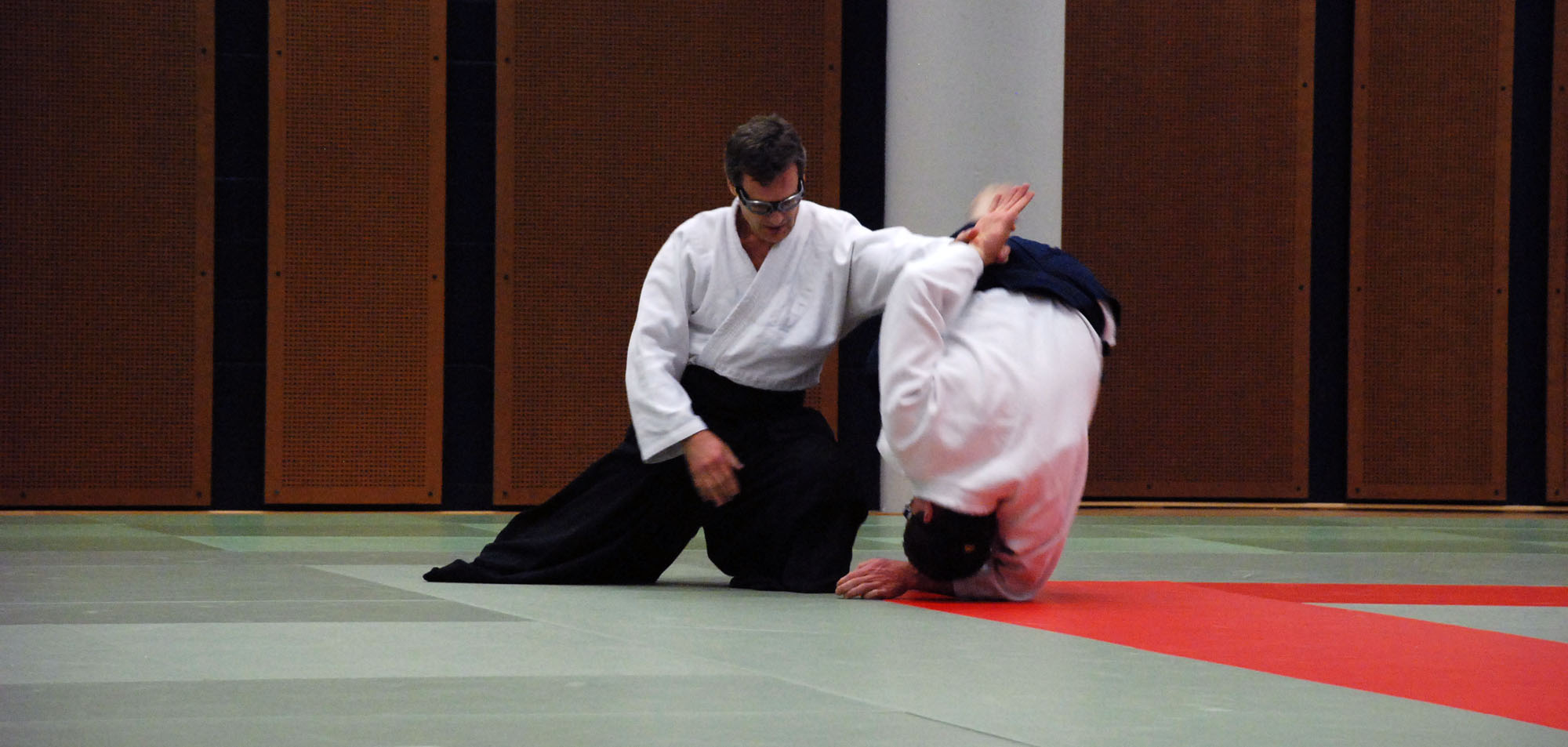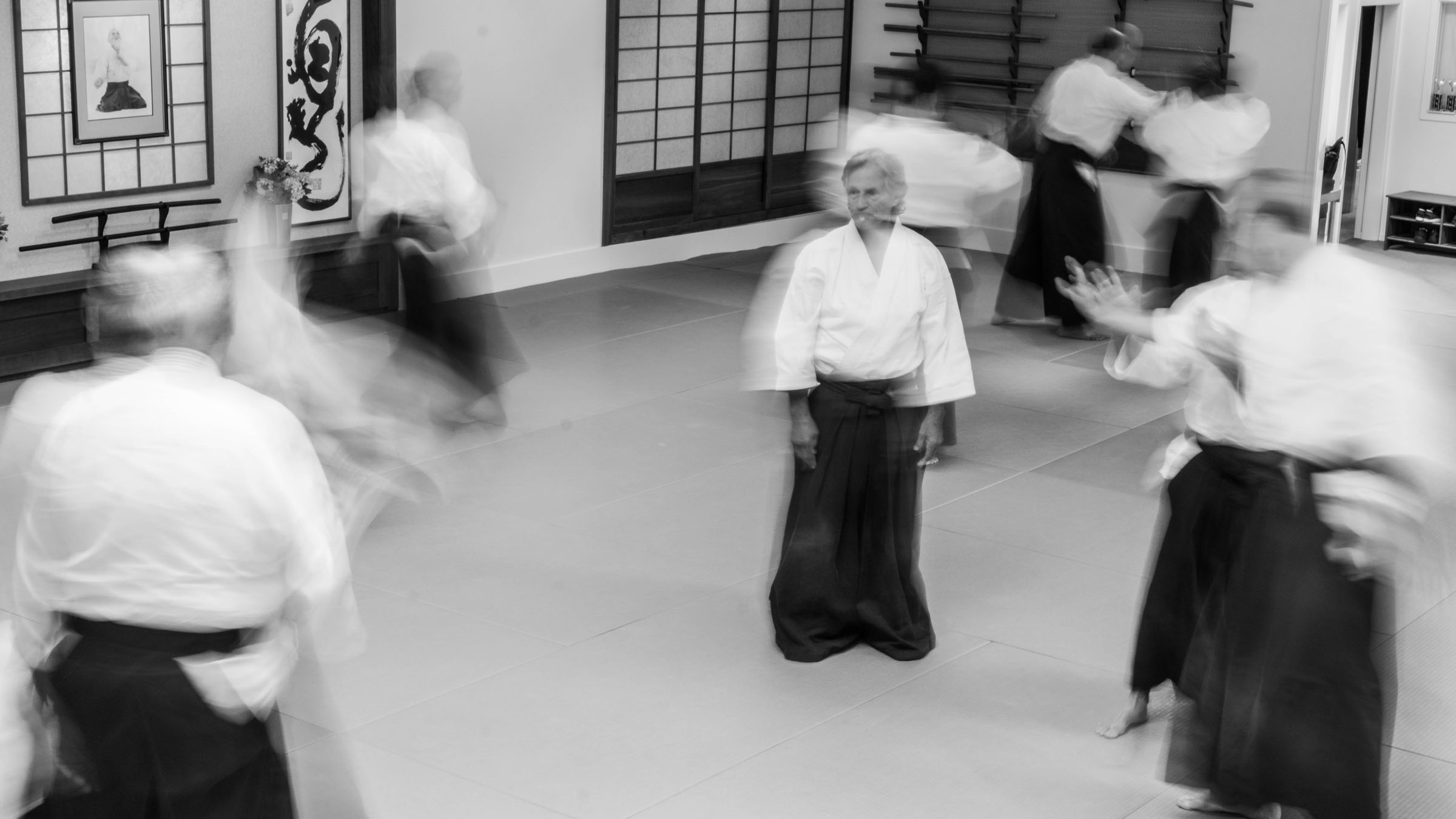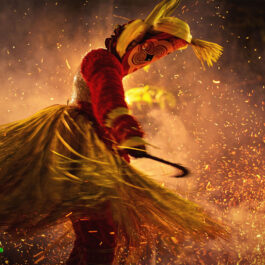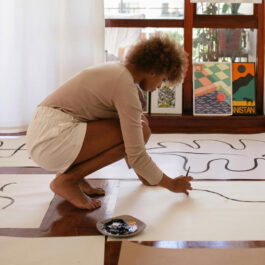“Forearm on the floor, don’t fold at the elbow, lay on your arm and shoulder and… roll!” says the sensei.
But I can’t throw myself onto the mat. The last time I did a forward roll, I was a child. It’s been a while.
Ten minutes in, and my first aikido lesson has already gotten difficult. I can only expect it to get worse. It seems I have two options: leave and forget about my fascination for this martial art, or roll with it (pun intended).
The thing is, I had been wanting to try aikido for many years, intrigued by its overarching philosophy of creating harmony. Contrary to other martial arts, in fact, aikido is not about attacking, but rather about neutralising the opponent’s attack by using their own strength against them.
Such a practice would improve my confidence, posture and awareness. Even more, I expected it to provide a host of other mental and spiritual benefits. There was no way a simple flip – or even the fear of cracking something – could stop me.
Ukemi: First, Learn How To Fall
The forward roll we are practising is called ukemi, a technique that allows you to fall without getting hurt. While every martial art has its own falling techniques, I had never seen a demonstration in person before. It’s only a basic warming up exercise, but it’s mesmerising to watch. Ukemi makes the martial artist appear as if suspended in space and time. Incredibly, there is a tiny window of time in which the body of the aikidoka (a practitioner of aikido) seems to be going in slow motion. Their movement is so fluid, so soft and easy, it looks effortless. Plus, they get back up as if nothing ever happened.
As I watch the sensei fall, I realise that there are several aspects of ukemi I need to grasp before I can attempt it. First, I must accept that falling is not a bad thing, but a natural process. Nothing bad is going to happen. It doesn’t mean defeat, nor is it a cause for shame. Secondly, becoming a master doesn’t mean not falling anymore. If anything, it means falling even more than the others.
I need to retrain my thinking to address the cognitive dissonance. After practising a few times, I slowly start to accept it. I will fall again and again, but I can do so without hurting myself or feeling defeated. I will just stand up again, because nothing bad happened. For me, that is huge.
Grappling: A Lesson In Humility And Letting Go
Next, we start practising several techniques to block the opponent. The sensei, in my case a small woman, shows us how to defend herself from her sparring partner, a much bigger man. Every movement she makes looks elegant and easy, as if she’s dancing. Each technique she demonstrates is based on two main actions: exiting the trajectory of the attacker by moving to either side, then immobilising them to neutralise the threat.

[Photo courtesy Aikido Club Luxembourg]
We bow to thank her for the demonstration, as custom dictates, and then we pair up two by two to try the techniques ourselves. To say that I am uncomfortable would be an understatement: I dislike being touched or having people enter my personal space. I am extremely self-conscious during the first few exercises; then I slowly start to let go.
“Relax,” says my opponent as he holds my twisted arm to the floor. I am supposed to relax my muscles, or I could get hurt by my own resistance (don’t ask me how I know). When I let go, everything is ok – I don’t feel any pain, just the discomfort of being blocked, unable to move.
Next, it’s my turn to immobilise, and even make my opponent fall. What really helps is my sparring partners giving me feedback – telling me what they feel, where I am giving them an opening – but I won’t lie: the learning curve is steep. We must change partners for every technique, and I learn something from everyone. They all share a word of encouragement and assure me that things will get better the more I practise.
Feeling Peace And Harmony
When I finish my first lesson, I am exhausted. My muscles ache for days, my legs feel stiff, and I have mat burns on my toes. More than that, I realise that it will take me a long time to get the hang of this martial art. Will I go to my second lesson, or give up altogether? I ultimately decide to try again.
As I step on the tatami mat and customarily bow to the portrait of Morihei Ueshiba O Sensei, the founder of aikido, I mentally prepare myself for the next challenge. I don’t know what it will be, but I know it will come, and I will face it calmly. Once I realise the switch in mental attitude, I am sold. This is exactly what I need, no matter how uncomfortable the training.
Surprisingly, things are easier this time. Ten minutes in, and I am rolling in all directions – even if in a haphazard, non-linear manner. The sensei offers encouragement, showing me the techniques over and over again, and even letting me immobilise her, which I manage to do. Sure, I am still very much a beginner, but somehow, I feel in harmony with the group. Even though I’m new, and I don’t even know the names of my companions yet, I feel like I’m fitting in. I’m doing what I can, and that is enough.
As I exit the dojo, I feel at peace. Would I be able to remain calm and react with composure in a real-life attack situation? No. Not yet, at least. But the gains in attitude, posture and confidence are undeniable, and I feel really proud of myself for systematically facing my fears of failing, of getting hurt, of feeling defeated or ashamed.
However long it will take for me to master the actual techniques, I am already reaping the mental benefits of aikido, and that makes it absolutely worth it from day one. In fact, I already signed up for another class.
Thanks to the Aikido Club Luxembourg for their support.














Sorry, the comment form is closed at this time.